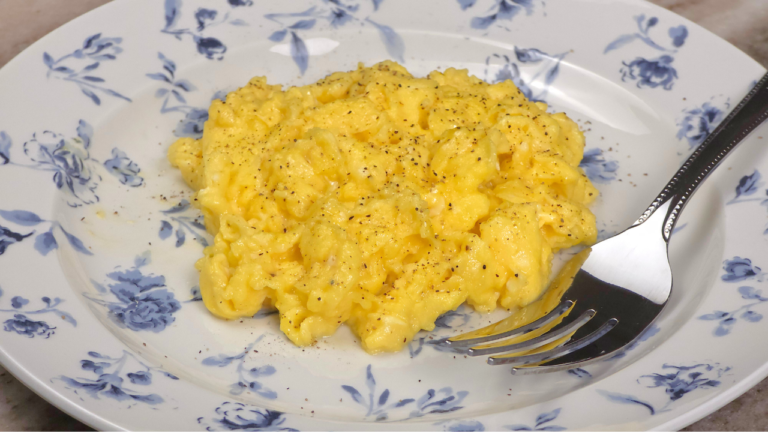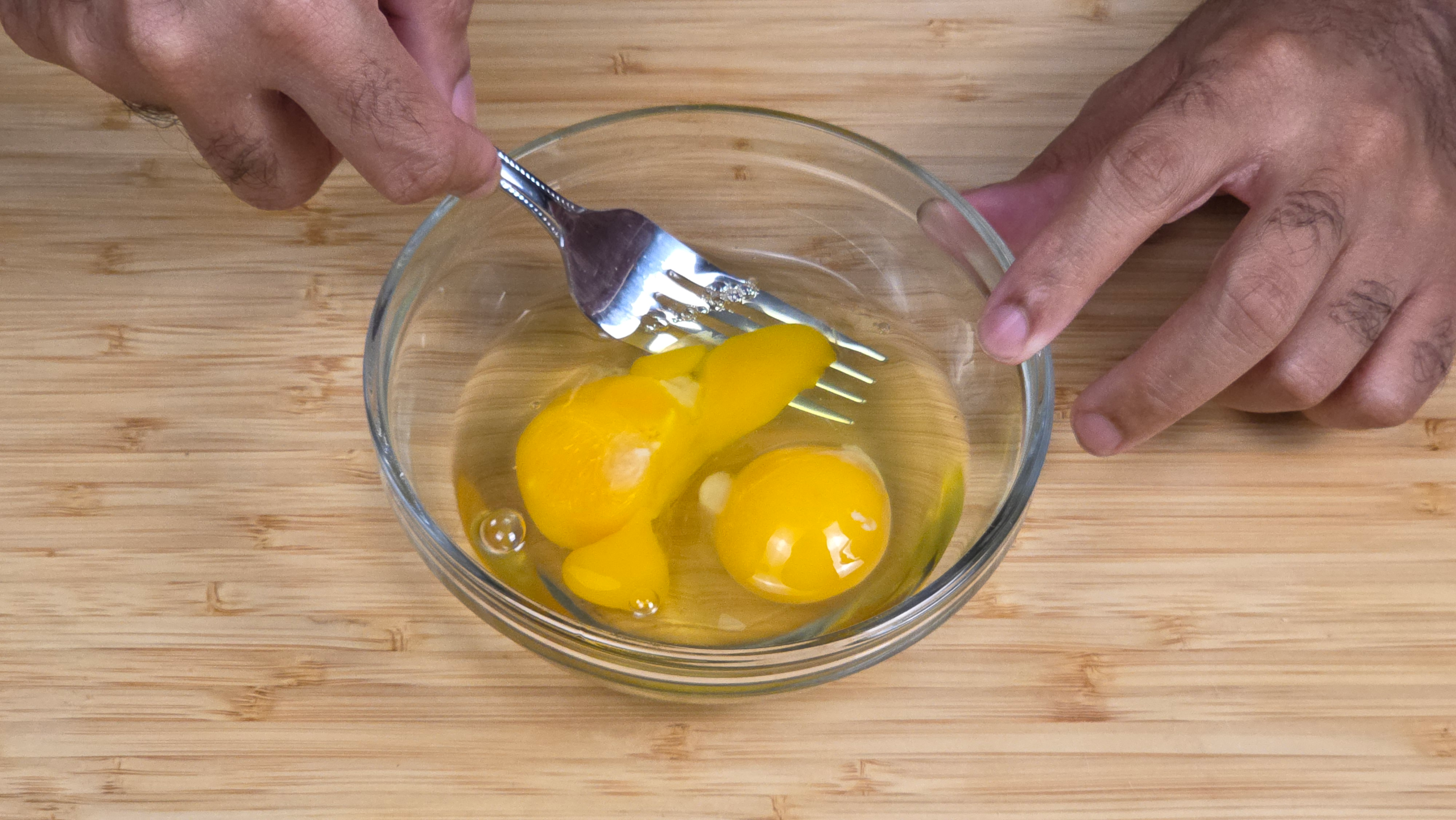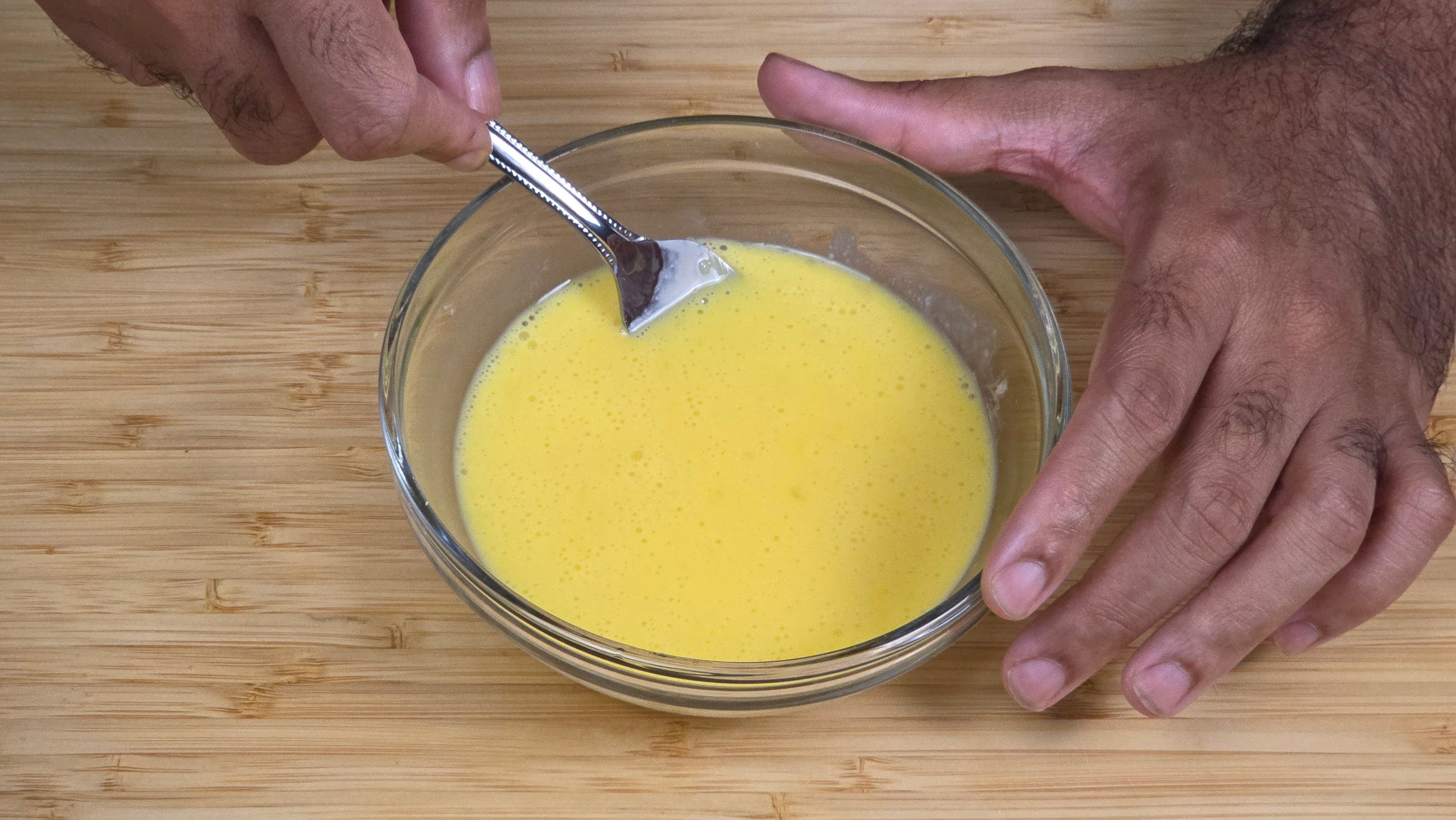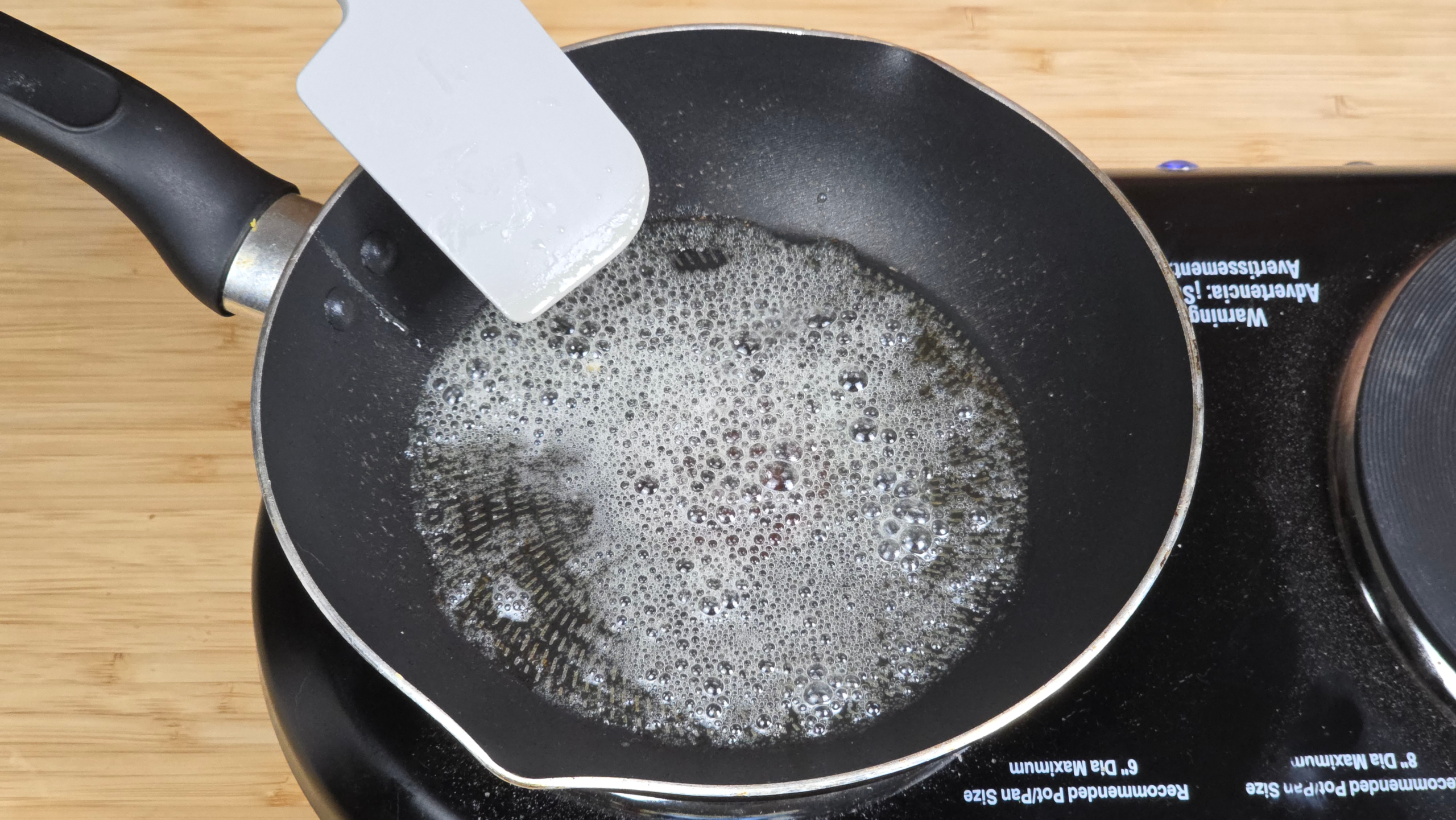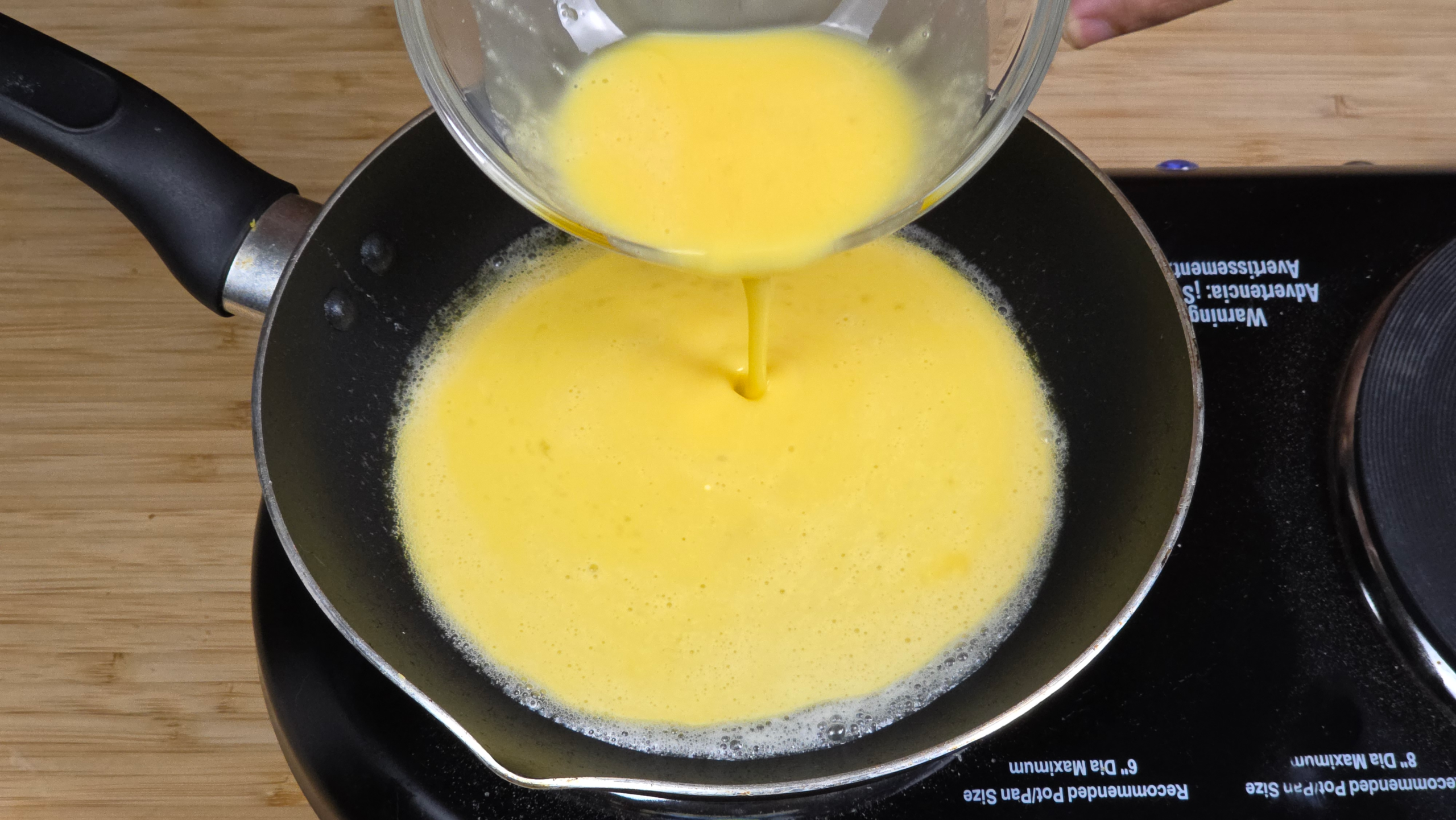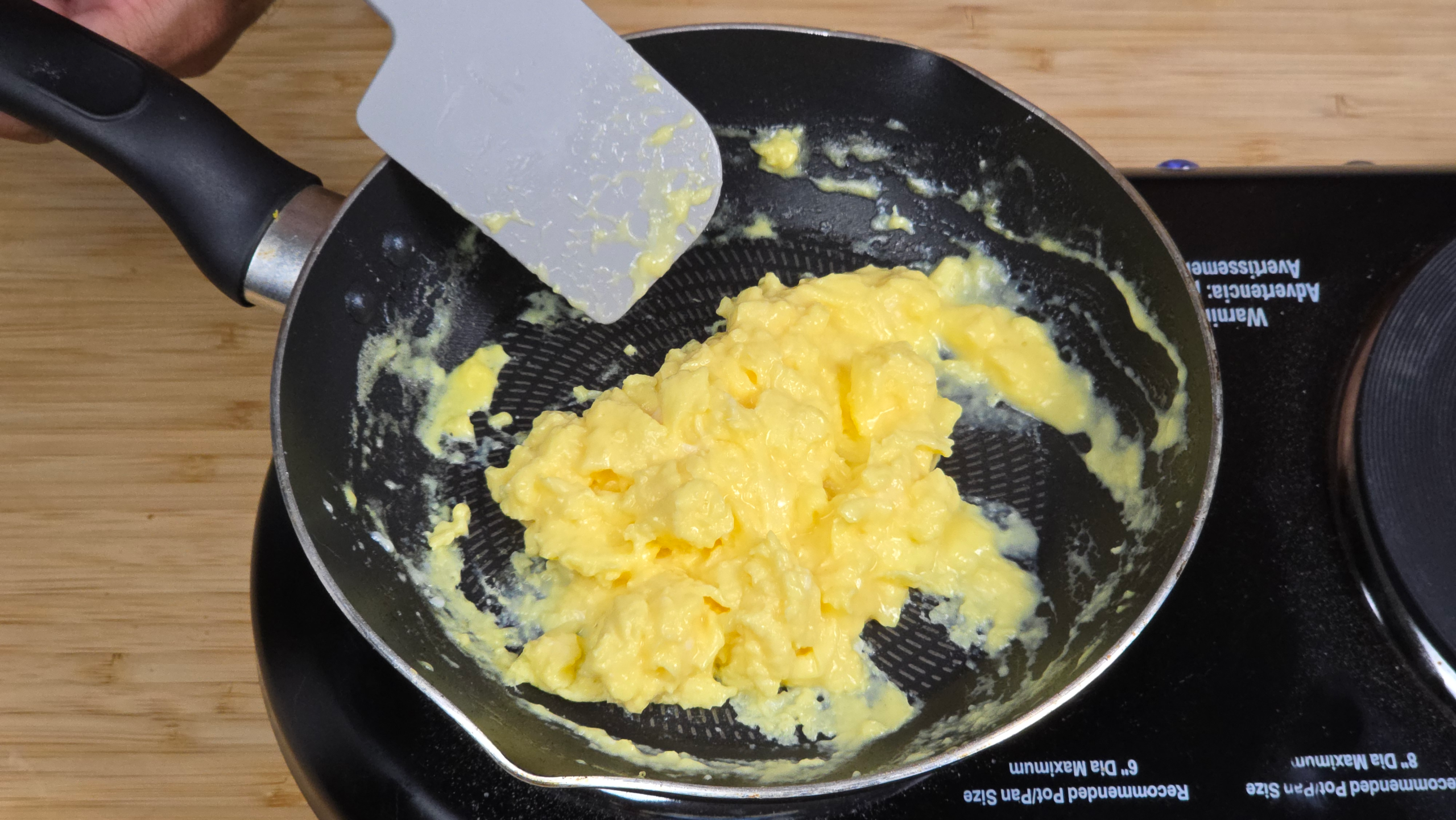Now I’m sure the very first things you said to yourself when you saw this post is “Why the heck does anyone need a scrambled eggs recipe!?” Well let me say, you’d be very surprised. Scrambled eggs, in theory, seems as though they’d be the easiest possible dish to make. Instead, many people (some famous / professionally-trained chefs included) struggle mightily with getting them right. They end up way too runny, way too dry, way too hard, way too bland, etc. So I thought to myself, why not share my method with the world to achieve scrambled eggs that achieve the right balance of flavor, firmness and moistness. And that’s exactly what I intend to do with this blog post.
Key Ingredients for Perfect Scrambled Eggs
It should go without saying that you will need fresh Eggs in order to make scrambled eggs (none of that liquid substitute mess in the carton). That said, what makes my method for cooking scrambled eggs stand out from the rest is the use of Cage-Free Eggs, Heavy Whipping Cream and Butter
- Cage-Free Eggs: Now this may be dependent upon the specific distributors of eggs, but in my part of the US, I’ve had a terrible time with using caged eggs. My intention isn’t to go on a political soapbox about how the chickens themselves are treated (that discussion can be had on a different platform), but the quality of the eggs they lay is just so poor. The so-called yellow folks will often have more of a greyish hue, and this translates itself into the presentation of the eggs when they’re done cooking (they look all drab & dreary). This is in large part why I choose to use eggs that were, at the very least, laid by cage-free chickens.
- Heavy Cream: You will often see individuals add maybe a dash of water or even milk to their eggs. Water is a popular addition is because steam from the water will lift up the protein in the eggs and form very fluffy curds. That said, when you use water, you’re missing out on a ton of flavor. So why I do use Heavy Cream vs. Milk. Milk is a step in the right direction because of its fat content, but it’s also much more watered down compared to heavy cream. Besides giving them a silky and custardy texture, the heavy cream helps to limit the coagulation of the protein in the egg whites, which is often why eggs become tough.
- Butter: This is really a non-negotiable ingredient for me at this point. Way back in the day, I used to use seed oils to grease my skillet for my eggs (to help prevent sticking). And don’t get me wrong, seed oils are fine if you don’t have butter on hand (for whatever reason). Since then, I’ve started using butter instead to grease my skillet. And as you can imagine, it has been a massive game changer. It gives the eggs a rich flavor (I would even describe it as a hint of nuttiness) as well as a velvety consistency. You don’t need to use a ton of it though, because then you’ll end up with basted eggs vs. scrambled eggs.
And that’s all there is to it. Scrambled eggs are not really as complicated as some make them out to be. By the time you finish reading this post, you will also be a pro at making scrambled eggs yourself and you’ll have family & friends begging to make these all the time!
Tips for Making this Recipe
Use a non-stick skillet. This is a controversial tip, and people have strong opinions about using non-stick cookware to prepare their dishes. That said, in my humble opinion, scrambled eggs is perhaps one of the few dishes where an exception should be made for using non-stick skillets. The problem with ceramic or stainless steel skillets is they lack the inherit properties in them that prevent the eggs from sticking to them as they cook. Short of dousing those skillets with way too much grease (which you then could end up with “basted” eggs), scrambling the eggs around in those skillets will be prone to user error. Not to mention, of course, they not as easily to either afterwards either.
Be patient. I understand we all have demanding lives and our time is extremely valuable, so it’s always great when we can find “hacks” that make cooking easier / faster. Unfortunately, if you want Scrambled Eggs that are done right, this is one of those dishes where there aren’t any real short cuts to the process. It may be tempting to want to constantly fiddle around with the heat as they cook (thinking they’re not cooking fast enough), but I advise against doing so. Scrambled eggs are best when cooked low and slow. As you gently move around the eggs in the skillet, you’ll notice that curdles will begin to form until eventually they all coagulate into firm but fluffy curds.
Use a fork to beat your eggs. The reason you should beat your eggs when you’re making scrambled eggs is to incorporate at least some air into them, which is how they achieve their light & fluffy texture. When it comes to beating eggs, people will typically use either a whisk or a fork to do so. That being said, I strongly recommend using a fork to beat your eggs for scrambled. Beating with a form allows for a gentle and controlled motion to simply mix the yolks and whites together. With a whisk, you risk incorporating way too much air into the eggs, which can make your eggs less creamy due to all of the excessive foam.
Start with using a cold skillet. Perhaps the biggest drawback with Butter is while it’s a very tasty addition to any dish, you must be mindful of the fact that it has an extremely low smoke point when you’re using it to grease your skillets for sauteing or frying. This is because the milk solids that are found in the butter breaks down at a fairly low temp and thus can burn easily. This is why it’s best to use a skillet that is cold to touch prior to heating it up, as you only gradually want the butter to melt and bubble/form before you add your eggs and making your scrambled eggs (in order to achieve maximum flavor).
Frequently Asked Questions
What about using free range or pasture raised eggs?
That’s even better, especially if you have easy access to pasture-raised eggs (which a lot of us who live in big cities do not). The reason I personally don’t buy and use free range eggs (and why I officially included them from my ingredient list) is because they are considerably more expensive, albeit for very good reason because the quality is so much superior. Ultimately though, cage-free eggs are the safe middle ground both price and quality-wise. You really just want to avoid eggs from chickens that are stressed the heck out from their living conditions, because they are more likely to produce eggs that aren’t all that pretty-looking or good tasting when you cook them.
Can I top my Scrambled Eggs with Parsley or Chives?
Absolutely! I personally can take or leave having these extra items on top of my Scrambled Eggs, which is why I officially excluded them from my recipe. That being said, if you prefer having these extra items as toppings on your scrambled eggs, you can certainly add them once the scrambled eggs are done cooking and you’re ready to eat/serve them.
Can I add cheese to my Scrambled Eggs?
Absolutely! I’m personally not a fan of cheese in my scrambled eggs (now if I were making an omelet, it would be a whole ‘nother story, haha!). That being said, if you prefer cheesy scrambled eggs, the best time to add them would be when they’re almost done. This gives them just enough time to evenly melt into the eggs. If you were to incorporate the cheese into the eggs prior to cooking them, you risk burning up the cheese. And if you’re someone who’s big on presentation, in order to get that cheese pull you see all over social media, it’s best to use freshly shredded cheese (prepackaged shredded cheeses have additives that prevent them from melting as easily).
When should I add Salt & Pepper?
Believe it or not, this is actually a hotly contested topic amongst cooks (professionals & hobbyists alike). I’m well aware of the scientific debate that has taken place about whether the addition of salt prior to cooking the eggs negatively affects the final texture of the eggs (by drawing moisture out of them). More recent evidence suggests that may not actually be the case. But all of that has nothing to do with my tip. The reason I personally recommend holding off with the salt & pepper until just before the eggs are done is because the flavor will be pronounced when you taste them, as the eggs will have a more vibrant aroma & taste.
How do white and brown eggs differ?
The only difference between white and brown eggs is literally their color. One is produced by brown hens and the other is produced by white hens. You won’t notice any other difference as far as flavor or texture. That being said, brown eggs tend to be a bit more expensive, only because there aren’t as many brown hens.
Try These Other Breakfast Recipes
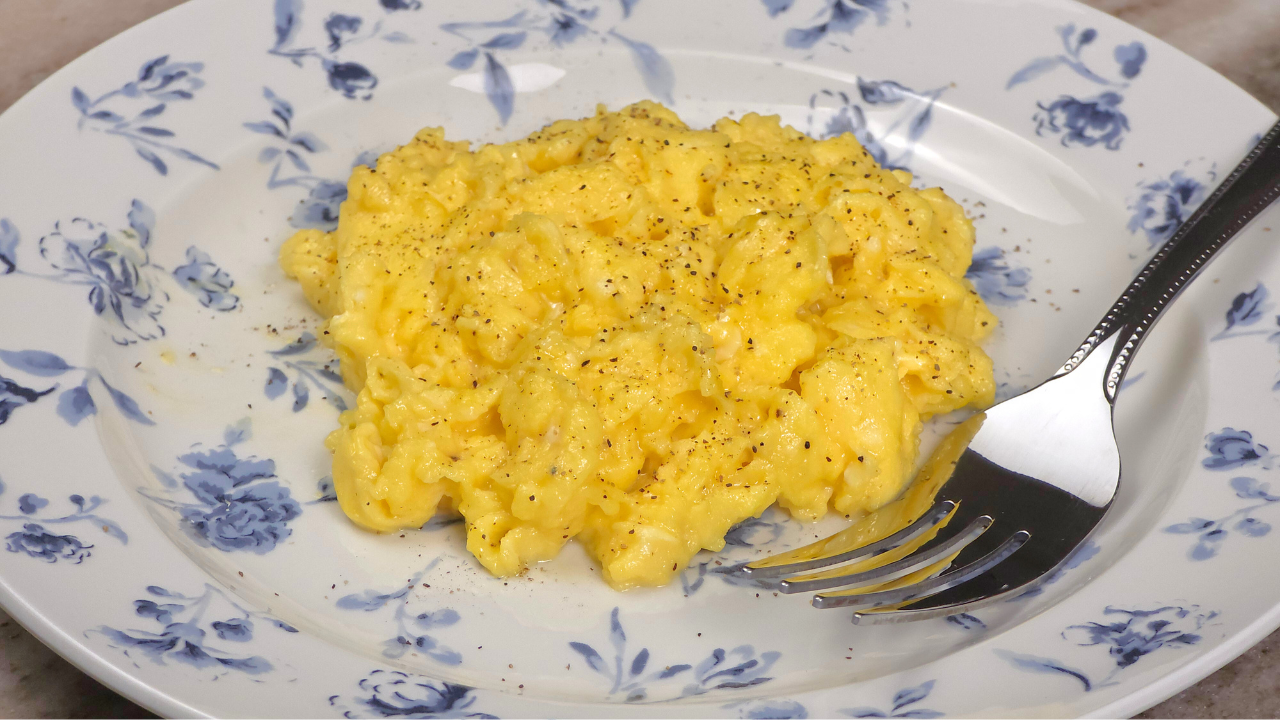
The Perfect Scrambled Eggs
Equipment
- 1 Small or Medium Skillet
- 1 Medium Bowl
- 1 Plastic Spatula
- Measuring Cups/Spoons
Ingredients
- 2 Each Extra Large Eggs
- 1 TBSP Heavy Cream (or Heavy Whipping Cream)
- 1/2 TBSP Unsalted Butter
Instructions
- Preheat skillet on stove at medium heat for 3 minutes*
- In medium bowl, add and beat eggs for 30 seconds.
- Add heavy cream to bowl and beat for an additional 30 seconds.
- Reduce heat on skillet to Medium-Low and continue to heat for additional 4 minutes.*
- Prior to adding eggs, add butter and allow it to melt until he reaches a bubbly/form-y consistency.
- Add eggs to skillet and cook for 3-4 minutes while constantly stirring around with plastic spatula to prevent sticking.*
- Prior to removing eggs from heat, season to taste.
- Remove eggs from heat and serve hot.



